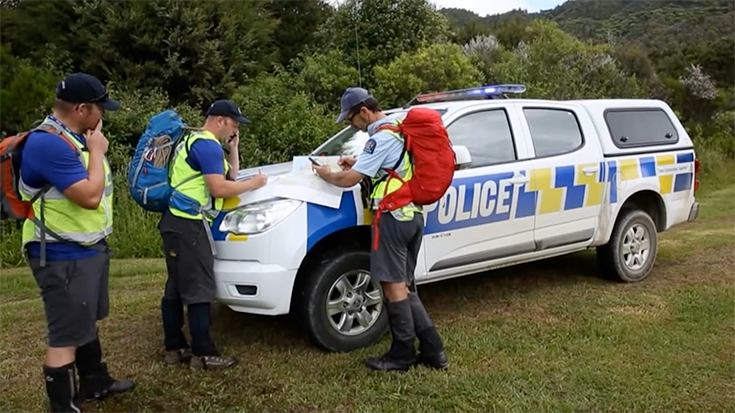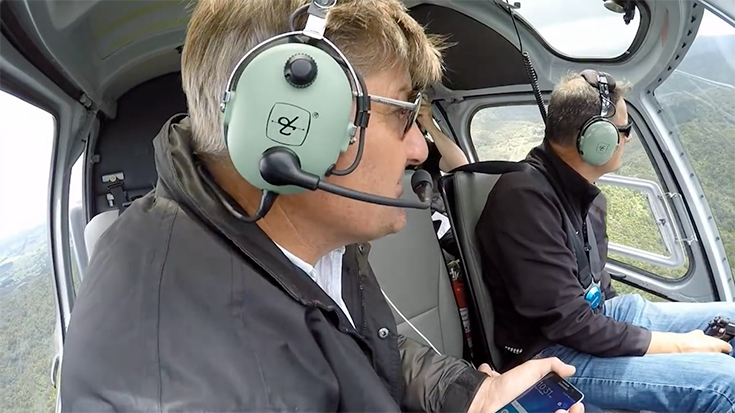SAR Blog: Lost in the Wilderness? Your mobile phone could save your life
One of the most frustrating things for any wilderness search and rescuer can be the lack of communication with the missing person. What if you could just give them a call on their mobile phone? Clearly that’s impractical in a wildness setting – or is it? Martin Boyle investigates
A new life-saving technology called the ‘Search and Rescue Network’ was recently tested by Vodafone and Police Search and Rescue in the Hunua Ranges near South Auckland in New Zealand.

The system was tested with a volunteer, a helicopter support team and a search team on the ground (photo: Vodafone)
The area is popular with hikers and campers but has no mobile phone coverage. The Search and Rescue Network creates an area of temporary mobile phone coverage underneath a helicopter, allowing rescuers to communicate with mobile phones in the coverage area below.
It works using a ‘ping’ as the mobile phone tries to connect with a nearby tower. The ping is intercepted by the Search and Rescue Network and used to narrow down the search area. The missing person can then make a 111 emergency call when they have signal bars on their phone or hear the helicopter overhead. The call is answered by the rescue helicopter crew, who can guide rescuers to their location and provide a report on their condition.

The helicopter support team during the search exercise (photo: Vodafone)
Auckland Police SAR Co-ordinator, Sergeant Dene Duthie said: “It is very exciting to have a two-way communications system in a zero coverage area that actually lets us communicate directly with a missing person. There have been a number of cases in the past where technology could have saved us time, money and potentially lives. We are looking forward to this going further.”
The idea for the technology came when American tourists Rachel and Carolyn Lloyd were rescued after being lost for five days in the New Zealand wilderness of the Taraua Forest on the North Island in May 2016. As a rescue helicopter flew over the pair it spotted a large ‘HELP’ sign in a riverbed written in large letters using stones and fern fronds. The Lloyd’s had mobile phones with them but they didn’t have reception and eventually ran out of power after five days.
The Search and Rescue Network is currently a prototype, but would be compatible with national and international SIM cards. The altitude of the helicopter will also determine the mobile coverage area. Using the device flying at 300m altitude will give coverage of up to 4.5 square kilometres.
Vodafone Technology Director Tony Baird said: “With this innovation, it’s like we’re creating a searchlight across the bush using a mobile signal. We’re really keen to keep working with SAR to get this technology to a stage where it could be used in real life search and rescue operations”.
This is the latest in Vodafone’s line of ’zero coverage’ innovations to assist emergency services operating in remote and isolated areas. In September 2015 the company demonstrated the ‘Nokia Network in a Box’ and ‘Z-Car’ solutions that assist first responders setup 4G connectivity within minutes of arriving on site at an incident.
Martin Boyle is CRJ's Search and Rescue Blog Editor
https://youtu.be/KJj_6QA9gA4
Martin Boyle, 14/06/2017